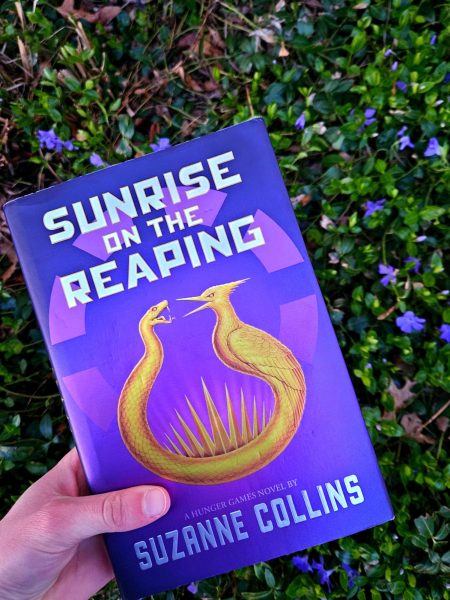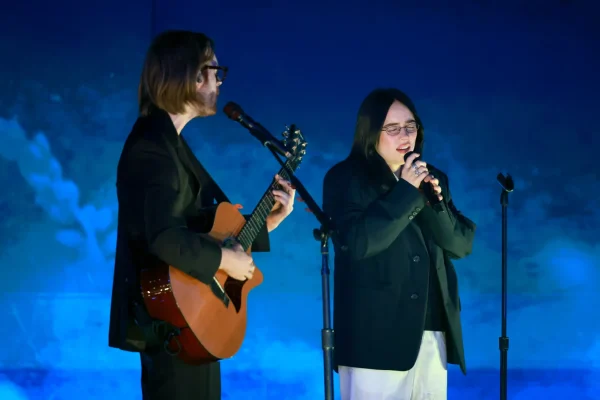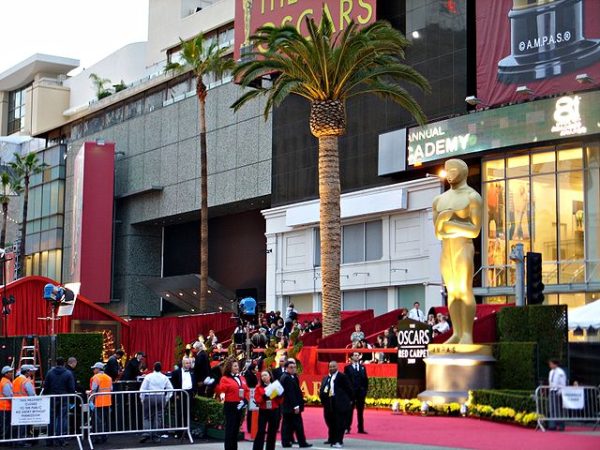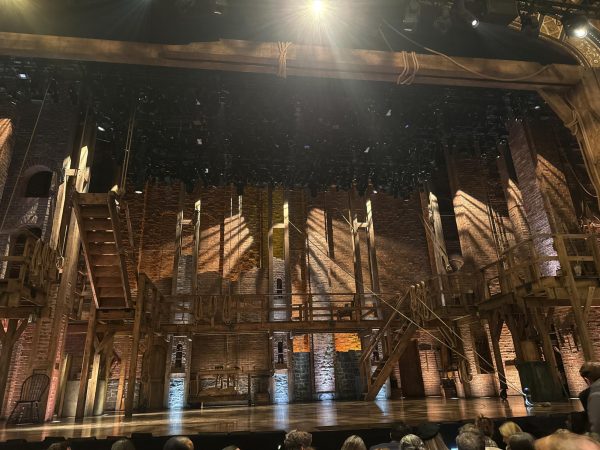A Comprehensive History of the Ten Most Iconic Renaissance Paintings
The Renaissance is one of the most well-known periods of art. Lasting from the 14th to 17th centuries, this era of art was all about rebirth following the darkness and isolationism of the Middle Ages. Many of the most iconic works of art ever created came out of the Renaissance.
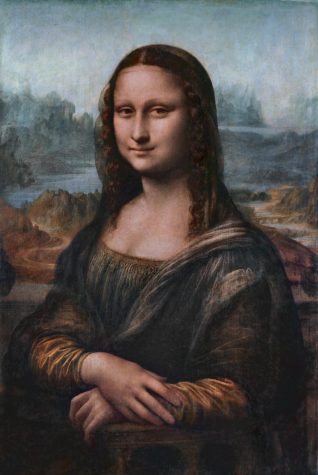
The one that probably comes to mind for most people would be the infamous Mona Lisa by Leonardo da Vinci. Painted in 1503, it pictures a woman by the name of Lisa del Giocondo sitting in front of a landscape. The Mona Lisa is the most visited artwork in the world, and is currently owned by the French public. The painting resides in the Louvre in Paris and will continue to for the foreseeable future. Did you know that since the Mona Lisa is in a public trust it can never be sold?
Art of the Renaissance also focused on the growth of philosophy and religion, and thus The Last Supper was born. Also painted by Leonardo da Vinci, The Last Supper depicts Jesus eating the final meal with his twelve apostles before his crucifixion. It was painted in 1498 at the request of Duke Ludovico Sforza for the refectory of the monastery of Santa Maria delle Grazie in Milan, and took three years for da Vinci to construct.
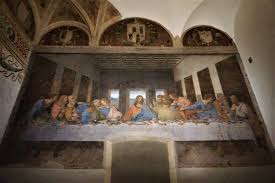
The Creation of Adam similarly is religious in subject, depicting God giving life to Adam through his touch, and was painted in 1512 by Michelangelo. In this scenario, Adam is representing mankind and the popular belief of the time that God gave life to humans. The Creation of Adam is an immobile piece of art, as it sits forever on the ceiling of the Sistine Chapel. The Sistine Chapel is located in Vatican City, the home of the Pope of the Catholic Church.
Primavera is a supremely influential work of the Renaissance. Sandro Botticelli painted Primavera around 1480. It features prominent mythological figures such as Venus, Mercury, Zephyrus, and Chloris pictured together to represent the coming of spring. “Primavera” is Italian for spring, and this painting is considered one of the most successfully executed allegorical works of the Renaissance (1). Its representation of the changing seasons has transcended its time. Primavera currently sits in the Uffizi Gallery in Florence, Italy.
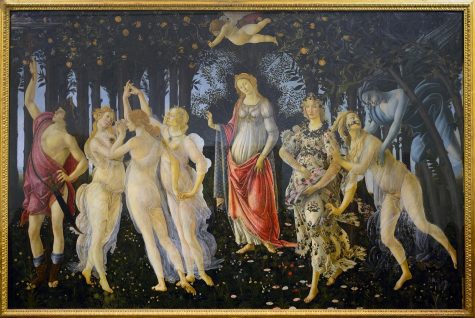
Showcasing how innovation characterized the era, The School of Athens pictures a mass of mathematicians, philosophers, and scientists communicating with and learning from each other, thus metaphorically breaking down the barriers that the Middle Ages set between them. The School of Athens pictures the greatest thinkers of classical antiquity, many of which lived in different times from one another. Raphael purposely pictured them all together to communicate his message about the giving and receiving of information across all subjects that was such a vital component of the Renaissance (2). The School of Athens was painted 1509 and 1511, and continues to remain in the Apostolic Palace of the Vatican.
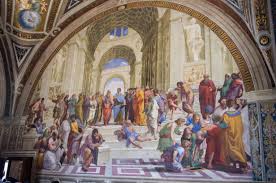
Sandro Botticelli continued his theme of centering his work around the mythological gods with the Birth of Venus. Venus made her second appearance as a subject of his work, standing front and center on a seashell as she is born out of the sea. Her presence on the shell is representative of her being pure and pearl-like (3). Botticelli concluded painting the Birth of Venus in 1486. Like his other masterpiece Primavera, Venus is housed in the Uffizi Gallery.
Commissioned in 1512 by Pope Julius II for the church of San Sisto, Sistine Madonna is a keystone work showcasing the importance of religion in the Renaissance. It pictures the Virgin Mary holding baby Jesus. To her sides sit Saint Sixtus and Saint Barbara, and below her sit the cherubs, little angels who are gazing upward at Mary. Mary and baby Jesus are representative of a vision of the saints and are coming towards them on Earth. The Sistine Madonna is one of Raphael’s most famous works. He died only a few years after finishing it, in 1520. The painting now is located in Dresden, Germany.
The Last Judgement similarly depicts a religious scene, but instead of the introduction of Jesus, it shows the final judgment by God of all humanity. Michelangelo painted this on the altar wall of the Sistine Chapel and it took him five years to complete. He was commissioned to paint this because of the success of his work The Creation of Adam. Originally, the men pictured were nude, but due to immense controversy, they were all eventually covered by some type of cloth or clothing (4).
Another popular religious work is The Kiss of Judas, showing Judas’s deceit of Jesus when he exposes Jesus to the authorities and has him arrested. Because of this, it is also known as the Betrayal of Christ. Giotto di Bondone was a revolutionary, as he was one of the first artists to portray Judas as a traitor (5). The Kiss of Judas is often considered to be an allegorical work representing good versus evil, and its style marks the end of the medieval era and a beginning of fresh and new stylistic ideas.
Last but certainly not least is The Assumption of the Virgin, painted by Titan in 1518. It rests on the high altar of the Basilica di Santa Maria Gloriosa dei Frari in Venice, Italy. Titan was inspired by the style and dynamic nature of works by Raphael and Michelangelo. The painting itself depicts the raising of Mary into heaven, and it has resided in Venice since its creation.
Overall, the Renaissance brought individuals together through popular topics like the development of art, the impacts of religion, and the giving and spreading of knowledge. The works resulting from this influential period have proven to be significant well past the original Renaissance era, as these works have survived for over five hundred years, still remain with us today, and are universally celebrated for their groundbreaking intricacies and complex meanings in relation to society.
Top 10 most iconic Renaissance paintings, as rated by https://www.artst.org/renaissance-paintings/
- https://mymodernmet.com/botticelli-primavera/
- https://www.khanacademy.org/humanities/ap-art-history/early-europe-and-colonial-americas/renaissance-art-europe-ap/a/raphael-school-of-athens
- https://www.uffizi.it/en/artworks/birth-of-venus
- https://censorshipinamerica.wordpress.com/2010/10/25/michelangelos-the-last-judgment/
- https://en.opisanie-kartin.com/description-of-the-painting-by-giotto-di-bondone-kiss-of-judas/
Your donation will support the student journalists of Parkland High School. Your contribution will allow us to purchase equipment and cover our annual website hosting and printing costs.

Gabby is a senior, and this is her second year writing for the Parkland Trumpet. She enjoys writing about politics and current events. She is...




